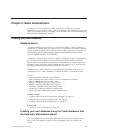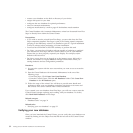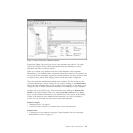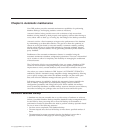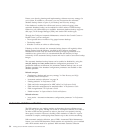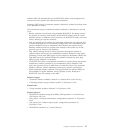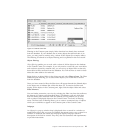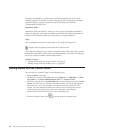
Protect your data by planning and implementing a disaster recovery strategy for
your system. If suitable to your needs, you may incorporate the automatic
database backup feature as part of your backup and recovery strategy.
If the database is enabled for roll-forward recovery (archive logging), then
automatic database backup can be enabled for either online or offline backup.
Otherwise, only offline backup is available. Automatic database backup supports
disk, tape, Tivoli Storage Manager (TSM), and vendor DLL media types.
Through the Configure Automatic Maintenance wizard in the Control Center or
Health Center, you can configure:
v The requested time or number of log pages between backups
v The backup media
v Whether it will be an online or offline backup.
If backup to disk is selected, the automatic backup feature will regularly delete
backup images from the directory specified in the Configure Automatic
Maintenance wizard. Only the most recent backup image is guaranteed to be
available at any given time. It is recommended that this directory be kept
exclusively for the automatic backup feature and not be used to store other backup
images.
The automatic database backup feature can be enabled or disabled by using the
auto_db_backup and auto_maint database configuration parameters. In a
partitioned database environment, the automatic database backup runs on each
database partition if the database configuration parameters are enabled on that
database partition.
Related concepts:
v “Developing a backup and recovery strategy” in Data Recovery and High
Availability Guide and Reference
v “Automatic statistics collection” on page 36
v “Catalog statistics” in Performance Guide
v “Table and index management for MDC tables” in Performance Guide
v “Table and index management for standard tables” in Performance Guide
v “Table reorganization” in Performance Guide
v “Health monitor” in System Monitor Guide and Reference
Related reference:
v “auto_maint - Automatic maintenance configuration parameter” in Performance
Guide
Automatic statistics collection
The DB2 optimizer uses catalog statistics to determine the most efficient access
plan for any given query. Having out-of-date or incomplete statistics for a table or
an index could lead the optimizer to select a plan that is not optimal, slowing
down query execution. However, deciding which statistics to collect for a given
workload is complex, and keeping these statistics up to date is time-consuming.
With automatic statistics collection, part of DB2’s Automated Table Maintenance
feature, you can let DB2 determine which statistics are required by your workload
and which statistics need to be updated. With automatic statistics collection
36 Getting started with DB2 installation and administration






